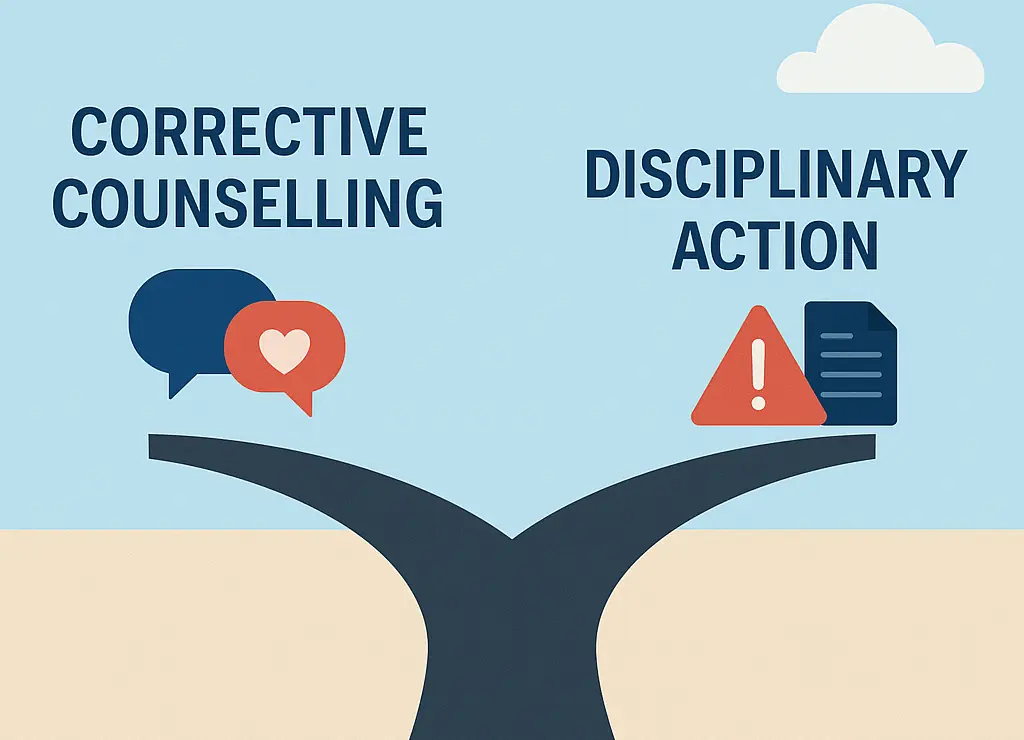
How To Manage Absent Employees
Contents
Being a manager is complicated.
Every day is spent problem-solving, tracking performance, productivity, and expenses.
At the same time, you need to monitor staff attendance, satisfaction, morale, and more.
One problem you can do without is employee absence.
Unfortunately, it’s something that affects all managers. According to the Office for National Statistics, 148.9 million working days were lost in 2024 due to sickness or injury.
Of course, sickness and even running late are facts of life. We all live in a hectic world!
It’s only a problem when absence becomes a pattern.
As a manager, you need to know how to effectively deal with absent employees. We recommend creating a step-by-step process now.
Identifying Absent Employees
Anyone can suffer from illness, car trouble, or some other unforeseen issue.
If the absence is random and beyond the employee’s control, it’s not something to be concerned about.
However, consistently being ill on a Tuesday or every third Monday is an absence issue.
After all, there’s little chance your employee is genuinely sick.
We often see new managers delay addressing attendance issues because they don’t want to seem harsh.
But silence can look like approval to the rest of the team.
Once we show them how to have structured, supportive return-to-work chats, they find most issues can be solved early – before they become formal problems.
Create An Attendance Policy
You can’t discipline or help any employee regarding absences unless you have a clear policy.
Important: It doesn’t matter whether you’re running a 5,000-employee company or a 10-person department; an attendance policy is essential.
Your policy should include:
- Action to be taken if absent or running late – i.e. who to contact
- Consequence of unscheduled absence or tardiness. For example, docking pay
- Proof of absence required, such as a fit note or appointment card
- Consequence of absence. You’ll need to specify that if management suspects sick days or lateness are intentional and not warranted, management will commence disciplinary action
- State the disciplinary process or refer to your disciplinary policy in the staff handbook
You can also work on this with your employees, to make sure it’s fair!
It’s a great way to introduce the IKEA effect, making them more invested by involving them in the process.
It’s advisable to add a good attendance clause. For example, employees with less than three absences will get an additional paid day off the next year
The policy should also explain that a good reason for an unscheduled absence, such as a car accident, will be recorded as “excused”. Meaning, it doesn’t count against the employee.
Once you’ve created an attendance policy, make sure all staff read it and sign that they have read it.
In one of our manager courses in London, someone shared how they were struggling with a staff member who was often late but excellent at their job.
We helped them build a fair attendance policy with clear thresholds and review points.
It stopped the perception of favouritism, and actually improved the employee’s punctuality because expectations were finally clear.
Be Consistent
No one knows your team like you do.
This can be an issue when enforcing attendance policies.
For example, if you know a member of staff is looking after an ill parent, you may overlook their regular late arrivals.
You won’t overlook another member of staff who frequently arrives late.
Unfortunately, all staff will notice that one member of staff is getting favourable treatment.
It will negatively affect morale, productivity, and your reputation as a manager.
That’s why it’s essential that you follow the same procedure with every member of staff.
Always Speak To The Employee
A critical part of a consistent attendance policy is to have that difficult conversations as soon as they arrive.
It doesn’t matter if they are half an hour late or have been absent for several days without notice.
Call them into a meeting at the earliest opportunity and start the meeting by asking them to explain their absence.
Don’t jump the gun!
There may be a genuine reason for an absence, even when it’s several days without notice.
Let your employee explain themselves before you decide what to do.
Approaching it in this way means that employees will feel you’re creating a fair work environment.
It’s important to listen and make a note of the reason. You also need to ensure you’re not being taken advantage of.
Having a complete record also makes it easier for you to spot any absence pattern.
One HR manager we supported found that patterns of absence only became clear once they started logging every late arrival and sick day consistently.
Within a month they spotted three hidden trends that had gone unnoticed for years.
This evidence made it much easier to have constructive, supportive conversations with staff.
Corrective Counselling
Once you’ve noticed a pattern to sickness or lateness, you’ll want to get your employee in for another meeting. Do this as soon as possible!
At the meeting, stress that this is not part of the disciplinary process, but that it could lead to it.
Corrective counselling is an opportunity to discover the reason behind the absence. For example, always being absent on the third Friday of the month could be a result of chemotherapy on the Thursday.
It can leave an employee too tired to work. They may not have told you about the chemo for fear of being treated differently.
Identifying the issue behind regular absence or lateness gives you the opportunity to help your employee.
Using the chemo example, you can allow them a discretionary day off, provided they let you know in advance when their chemo is.
Or, you could let them work from home on that day. Just remember, this may start a rush of work-from-home requests.
Good employees are worth keeping. Finding a way to create their absence or lateness will help you keep the employee while motivating and boosting the morale of your entire team.
Disciplinary Process
If the reason for the absence/lateness isn’t good enough, or the situation hasn’t changed after corrective counselling, you’ll need to advise the employee that disciplinary action will follow.
Your company policy will state the disciplinary procedure.
It should be three warnings before an employee is fired.
Your aim is to ensure all staff members see you’re doing everything possible to help the employee.
Conclusion
Unscheduled absences and lateness need to be dealt with promptly.
Of course, it can be hard to do so, especially if you like an employee or feel they are particularly good at their job.
However, to maintain a fair workplace environment, you need an absence policy and to follow it every time someone is absent.
Your staff will appreciate your fair approach; everyone knows what is expected of them and what happens if they don’t meet expectations.
It also gives you every opportunity to hold onto the staff you value the most.
- Facebook: https://www.facebook.com/profile.php?id=100066814899655
- X (Twitter): https://twitter.com/AcuityTraining
- LinkedIn: https://www.linkedin.com/company/acuity-training/





